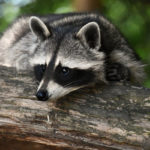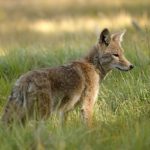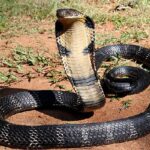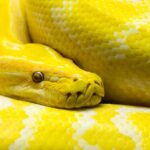
- Brian Moss (President)
- AAAC Wildlife Removal
11/28/2022 Total words : 1645
What do birds eat?
Birds are masters of the sky and they use their flying skills for hunting and foraging food. They come in all shapes and sizes and exist in almost every corner of the world. But what do these feathered creatures eat? Let's look at what birds typically eat and some interesting facts about their feeding habits. What Do Birds Like to Eat? There are thousands of bird species. So, it's no surprise that they eat a wide variety of food. Some birds are carnivores and eat mostly meat. Others are herbivores and prefer seeds, fruits, and insects. And still, others are omnivores and will eat just about anything! Below are the types of food birds love to eat: Seeds Seeds attract birds. For one, seeds are an excellent source of nutrition. They are full of the fats, proteins, and carbohydrates that birds need to stay healthy and energized. In addition, seeds are relatively easy to digest, meaning that seed-eating birds can get the nutrients they need without expending a lot of energy. Many birds, like goldfinches and house sparrows, eat seeds in large quantities. They will spend their days searching for seeds to eat in the wild. Some of their ultimate favorites include the white proso millet, safflower seeds, sunflower seeds, and nuts like acorns and almonds. Fruit Fruit-feeding birds are called frugivores. These fruit eaters include American robins, parrots, scarlet tanager, brown thrasher, orioles, gray catbird, and cedar waxwing. Some of the fruits they enjoy include grapes, oranges, strawberries, and blueberries. These fruit eaters are not the only birds who feed on fruits. Some omnivorous species of birds also include fruits in their diet. Nectar Nectars provide a rich energy source for several small birds; however, they must still consume an alternate food source that supplements their nutritional needs. These nectar-eating birds are nectivores that are usually found in tropical areas. They have long beaks that reach deep into flowers to get the sweet nectar. Hummingbirds, swifts, and sunbirds are the most prevalent nectivores. Insects Bird-eating insects are insectivorous birds. This includes the woodpecker, robins, warblers, and swallows. They make up a large part of a bird's diet, and they will spend hours each day looking for them. Some of their favorites include ants, beetles, and grasshoppers. A lot of birds eat insects. They are considered beneficial biological control agents as they contribute to the balance of these insects' populations. Some birds, like flycatchers and swallows, eat nothing but insects. While we're on insects, it's important to mention that some birds eat bugs. These include crickets, caterpillars, and even spiders! Some bug-eating birds you may be familiar with are bluebirds, kinglets, and nuthatches. Worms Worms attract birds too. In fact, it's one of their favorite foods. They use their long beaks to probe deeply into the mud and clay in search of buried earthworms. Worms serve as a significant food source for many baby birds. These slimy creatures are a good source of protein for birds. Some bird species that eat worms are robins, bluebirds, and woodpeckers. They’d quickly pull the worm out and swallow it whole when they find one. They will also consume leeches, slugs, and even snakes! So, if you ever see a bird with a wriggling creature hanging from its beak, don't be alarmed - it's just having a little worm snack. Fish Birds that feed on fish are called piscivores. Fish-eating birds typically live near water so they can easily catch their prey. Some of the most popular piscivores include night-heron, pelicans, kingfishers, and ospreys. Piscivores hunt for fish by either swooping down or wading into the water to catch them. Amphibians Birds love amphibians too. Amphibians are a type of animal that can live both on land and in water, making them the perfect food for birds that live near ponds or lakes. Birds that eat amphibians are called amphibivores. The ones that eat these slimy creatures include night-heron, bittern, and waterfowl. Common examples of amphibians that birds love to prey on include tree frogs, salamanders, and newts. Reptiles Reptiles are another staple on the birds’ menu. These scaly creatures make an excellent meal for birds of prey, like hawks, eagles, falcons, and owls. Some of the reptiles that these birds eat include snakes, lizards, and turtles. Conversely, A lot of reptiles also hunt birds. There are many terrifying giant reptiles that feed on birds. Reptiles like crocodiles, Komodo dragons, alligators, and snakes. Most birds that feed or live near water bodies and jungles often fall prey to them. Birds Unsurprisingly, birds eat their kind too. This happens mostly when a bird is sick or injured and cannot fly away. However, some birds will eat other birds regularly. Like owls, crows, and northern shrikes, for example. These birds mostly go for the vulnerable chicks, fledgling, and even unhatched eggs from nests. Mammals Birds find these small animals appetizing. They consider them a good meal- especially for larger birds with strong talons like the red-tailed hawk, northern harriers, and barn owls. These birds typically eat small mammals, including rodents, rabbits, squirrels, and bats. Birds who eat these animals are considered carnivorous and are termed bird raptors or raptors. They are predators who catch their prey mid-air and even on the ground. Carrion Carrion is the dead and decaying flesh of animals. While this may sound surprising to us, some birds do love to eat carcasses. Vultures, for example, primarily feed on dead animals. Other birds that enjoy eating carrion include crows, ravens, and magpies. These flying creatures can be called scavengers too- animals who pick at the remains of other animals that have died from other causes, like starvation, disease, or after being preyed upon. Eggs Last but not least, there are eggs. Birds typically eat their own eggs or the eggs of other birds. This happens when the mother bird is not able to incubate all the eggs in her nest, so she will eat some of them to preserve energy. Some birds will also raid nests and eat the eggs inside. These include cuckoos, cowbirds, and even some species of ducks. Birds' Eating Behavior Like other animals, birds have a specific strategy when eating or searching for food. They have different bill shapes or beaks, which allow these flying creatures to exhibit different foraging methods. How Do Birds Hunt and Forage For Food? There are several strategies for how birds forage for food. It all depends on the type of food they're looking for and their hunger level. Here are a few standard methods: Probing This is a type of foraging where birds use their long beaks to poke into crevices and holes for food. Woodpeckers, kingfishers, and nuthatches are some birds that use this method. Scanning Birds scan their surroundings from a high perch to look for food. Once they see their prey, they will swoop down to catch it. When they scan for food, they typically look for larger items such as fish, amphibians, and reptiles. Birds that use this foraging method include herons, eagles, and hawks. Skimming Skimming birds fly low over the water to look for food. When they find something, they scoop it up with their beak. Birds that use this method include terns, gulls, ducks, and auks. Gleaning Birds look for food on top of leaves, branches, and other surfaces. They use their beaks to pick at insects or other small creatures crawling on these surfaces. Robins, warblers, and thrushes are some examples of gleaners. Hover Gorging This method is used by birds that eat insects. While hovering in mid-air, they snatch the insects with their beaks and then swallow them whole. Swifts and hummingbirds are some of the birds that hover over the gorge. Pursuit Diving This is a type of foraging where birds dive into the water to catch fish. Ospreys and herons are some of the birds that use this method. Gathering These birds work together in groups to find food. They typically communicate with each other to let the others know they have found something. Birds that use this method include robins, crows, and jays. Bird Terms To Get Yourself Familiar With Insectivorous birds - describes birds who primarily feed on insects. May it be aquatic or flying insects, ants, spiders, grasshoppers, caterpillars, dragonflies, Granivorous birds - These birds generally feed on grains, seeds, droplets, fruit from plants, and other nuts. Amphibivores - predatory animals, in this case, birds, who love eating amphibians like toads, salamanders, lizards, etc. Piscivores - carnivorous animals that mainly feed on fish. Wading birds - are long-legged birds that wade on shorelines and other bodies of water to hunt. They are usually fish-eating birds but search for aquatic insects, amphibians, and other water-living organisms. Conclusion As you can see, there are various foods that birds eat. Their diet depends on location, availability, and hunting/foraging methods. They are fascinating creatures, and their eating habits are just one of the many things that make them unique. FAQs I usually offer birds uncooked rice, but they won't eat it. Why? Not all birds are attracted to rice. Pigeons, doves, and pheasants are the only usual eaters. Other species don't get attracted to uncooked rice. Is it okay to capture and relocate wild birds I saw on my property? No, it's not okay. You might be violating the law if you do that. Contact your local wildlife agency to ask for help instead. I want to feed birds in the meantime before calling wildlife control professionals. What should I give them? You can feed birds using a substitute bird food in your house. You could give them fruits like apples, pears, grapes, and berries if they're garden birds. You could also give them vegetables like lettuce, cabbage, bell pepper, and carrots. Originally published at AAAC Wildlife Removal: https://aaacwildliferemoval.com/blog/birds/what-do-birds-eat/












